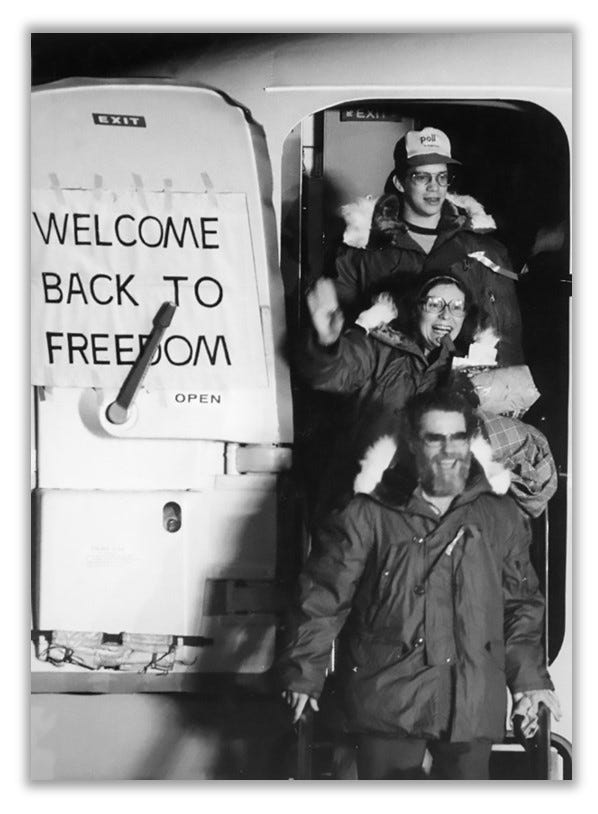TDIH: Iran Hostages freed
On this day in 1981, representatives from the United States and Iran sign the Algiers Accords. That document laid the groundwork for American hostages in Iran to finally come home. They’d been held for just over 14 months.
Problems with Iran, of course, had been decades in the making.
The country’s former dictator, the Shah, had obtained power with the help of the United States and Great Britain. He was generally pro-Western, but he’d faced troubles within his own country. In early 1979, he was ousted from power and exiled from the country. The Shah soon asked for asylum in the U.S. He had cancer and was seeking treatment.
President Jimmy Carter granted the request in October 1979, citing humanitarian reasons. Iranians were furious! Anti-American sentiment in that country reached a fever pitch. On November 4, 1979, revolutionary Iranians stormed the United States Embassy in Tehran and took 66 people hostage. Thirteen women and minorities were soon released. (Because they allegedly already suffered “the oppression of American society.”) One other hostage was eventually released for health reasons. The other 52 hostages were kept in terrible conditions for 444 days.
The Carter administration tried economic sanctions, freezing Iranian assets, and embargoing oil. And yet the hostage crisis continued. Finally, in April 1980, Carter approved a military attempt to extract the hostages—Operation Eagle Claw. The move was a risky one, and it ended horribly. A sandstorm caused several helicopters to malfunction. One helicopter crashed into a transport plane. Eight soldiers were killed. Footage of the wreckage emerged, letting the world know that we had tried and failed to save our citizens.
As Carter’s administration came to an end, he continued negotiations for the “innocent victims of terrorism and anarchy.” Finally, on Reagan’s inauguration day, Carter reported to Reagan that the hostages would be released.
Did Iran free the hostages because of Carter’s persistence or because it saw the writing on the wall after Reagan was elected? The question can be a subject of some dispute. In his autobiography, Reagan simply notes that he “made a decision not to criticize President Carter” on the subject because he thought it might undermine negotiations.
In a similar vein, Reagan biographer Lou Cannon describes the Reagan campaign as deliberately silent on what it might do to free the captives if they were still there after inauguration day. But Reagan’s “standoffish” position, Cannon notes, was used by Carter’s negotiators to speed a deal along. They found a way to get the message across that a new Reagan administration might not be so cooperative.
So perhaps the answer to the big debate lies somewhere in the middle?
Either way, Reagan was aware of this news as he was being inaugurated on January 20, but he did not want an announcement made until the hostages had cleared Iranian air space. However, he had an insert written for his speech and planned to use it if he received a signal during the inauguration ceremony, telling him that the hostages were finally free.
He did not receive that signal during the inauguration ceremonies, but he was able to make an announcement at a luncheon later that day.
Reagan later received the recently freed hostages at the White House on January 27. His diary entry for that day was simple:
“Ceremony on S. Lawn to welcome hostages home. Thousands of people in attendance. Met the [families] earlier. Now we had in addition the [families] of the 8 men who lost their lives in the rescue attempt. One couple lost their only son. His widow was also here. I’ve had a lump in my throat all day.”
Sources can always be found on my website, here.



What was beautiful about this was that neither Carter or Reagan worried about who played off of who. The goal was to get the people out. Amazing what cooperation can do when the people not politics are being served
seems iran did not want to tangle with reagan....